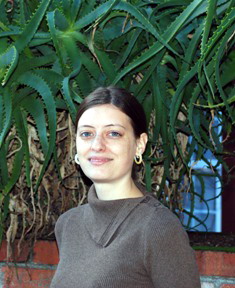Acupuncture & TCM Articles
Acupuncture’s role in Supportive Housing
By Tamsen Staniford, L.Ac.
 Supportive Housing is affordable housing for those at risk for homelessness. It is similar to public housing in that it addresses the housing needs of low income individuals and families; but offers access to services such as harm reduction, community building, healthcare, job training, money management, and other programs to help maintain stable housing . Access to resources is provided to residents by a large network of community health care providers, non-profit organizations, faith based organizations, and local and federal government programs. Supportive Housing is affordable housing for those at risk for homelessness. It is similar to public housing in that it addresses the housing needs of low income individuals and families; but offers access to services such as harm reduction, community building, healthcare, job training, money management, and other programs to help maintain stable housing . Access to resources is provided to residents by a large network of community health care providers, non-profit organizations, faith based organizations, and local and federal government programs.
With the tireless efforts of compassionate individuals and non-profit organizations, New York City created the model in the 1980’s that the majority of other communities have emulated, with San Francisco following in the late 80’s and early 90’s. The majority of supportive housing communities are in Single Resident Occupancy (SRO) hotels in major urban areas such as NYC and SF, and housing projects in mid-size and smaller cities.
Acupuncture and related Oriental Medical services can play many important roles within these communities. Perhaps the most well known success of Acupuncture in public health is the NADA protocol. The protocol was developed by the National Acupuncture Detox Association to ease the symptoms of detoxification and support recovery from substance use. The protocol has been used in clinics, detox centers and prisons across the country with good success. NADA is an important tool in a supportive housing community as a large number of residents may be active or recovering substance users.
The majority of residents have multiple medical diagnoses in addition to current or past substance use that often include diabetes, high blood pressure, HIV, hepatitis C, and/or mental illness. The burden of cost for medical care is enormous and largely subsidized by taxpayers through local and federal programs. Care for these patients falls to local emergency rooms and low cost or free community clinics as most are insured by MediCal or Medicare, if at all.
Acupuncture is one tool to help reduce local and federal costs by helping treat acute and chronic illness, providing health education and referrals, and making additional links to case managers and directors, on site medical providers, and community health resources. Acupuncture treatment can help improve a patient’s condition so that they use less pain medication and spend less time in hospitals and emergency clinics. Acupuncture can also help residents cope with the everyday stresses that come with living in these communities.
Perhaps the most important role the acupuncture practitioner can play in these communities is simple human connection. The practitioner a medical provider; but also a compassionate heart, an advocate, a good listener, an educator, and hopefully a role model. As acupuncturists, we create a safe space for someone to drop their burdens, breath deeply and relax. A place to be heard and understood, validated and cared for, and in many cases inspired to continue making healthy life choices.
Acupuncture programs do well in supportive housing communities that have established community involvement activities and services as well as access to other health care modalities. Introducing acupuncture services during other group meetings such as health fairs, coffee hours, and other medical evaluations increase the likelihood and number of residents that request treatments. The sense of community that is created by group acupuncture gives participants a sense of greater connection to their neighbors and service staff and increases participation in the surrounding activities.
Challenges to acupuncture programs arise mainly when there is a lack of participation or interest from service staff, when there is a general lack of trust or sense of community among residents, or lack of funding to keep a program running. Each of these challenges requires a different solution specific to the community. As a result, a large portion of the acupuncturist’s personal growth, as well as the impact of the service to the community, come from meeting these challenges. The rewards are well worth the effort for the community, the residents, and the acupuncturist.
---------------------------------------
1) http://www.csh.org/index.cfm?nodeid=81
2) http://www.shnny.org/what_is_history.html
http://www.ctpartnershiphousing.com/index.php?option=com_content&task=view&id=697&Itemid=117
3) http://www.acudetox.com/
Tamsen Staniford, L.Ac., MSTOM practices acupuncture and oriental medicine in San Francisco, California. Her work with supportive housing was done through Quan Yin Healing Arts Center and Episcopal Community Services. Currently, she performs house calls treatments for homebound patients; and practices at Schizandra Health Center
| 